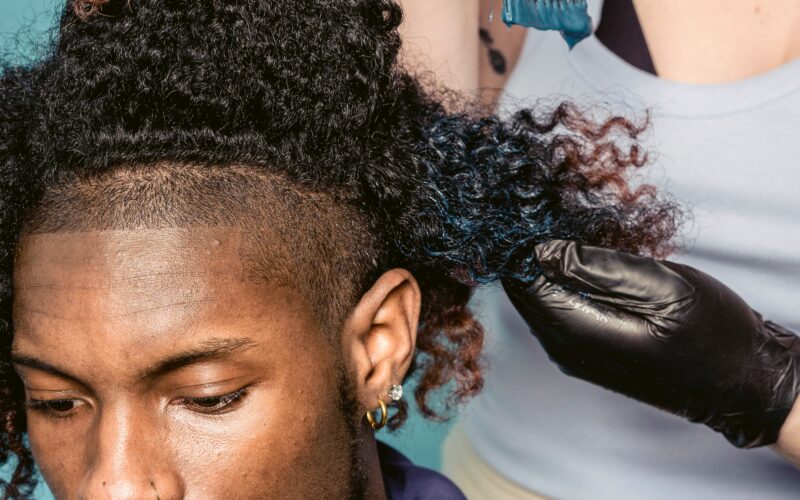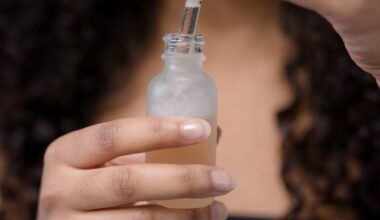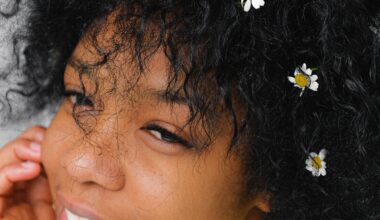Introduction
Hair Coloring and Health: Navigating the Myths and Realities
When it comes to hair coloring, it’s not just about achieving that perfect shade or a bold new look. Questions and concerns about its impact on health often arise. In this comprehensive guide, we’ll unravel the truth about hair coloring and health, separating fact from fiction.
Hair coloring has been a staple in the beauty industry for decades, but rumors and misconceptions persist about its potential risks. We’re here to set the record straight. Throughout this article, we’ll explore the science behind hair dye ingredients, debunk common myths, and provide you with the knowledge needed to make informed decisions about your hair color choices.
The Big Question: Does Hair Coloring Damage Your Health?
Unveiling the Truth: Does Hair Coloring Pose Health Risks?
The question looms large: Does hair coloring damage your health? It’s a concern that has lingered for years, often leading to uncertainty among those who enjoy changing their hair color. To address this question, we need to examine the science behind hair dye ingredients and their impact on health.
The Science Behind Hair Dye Ingredients
Hair dyes consist of various chemicals designed to alter the color of your hair. The primary ingredients include pigments, alkalizers, and developers. While these chemicals can transform your hair into vibrant shades, concerns have arisen regarding their potential effects on health.
Understanding the Concerns
One of the main concerns is the presence of chemicals such as ammonia and PPD (paraphenylenediamine) in hair dyes. Ammonia is known for its pungent odor and its role in opening hair cuticles to allow color penetration. PPD is a common allergen and can lead to skin reactions in some individuals.
However, it’s crucial to note that the use of these chemicals in hair dyes is carefully regulated. Health authorities impose strict limits on their concentration to minimize potential risks. Additionally, many brands now offer ammonia-free and PPD-free options to cater to individuals with sensitivities.
The Bottom Line
While there are concerns about the potential health risks associated with hair coloring, it’s essential to approach this topic with balanced information. The vast majority of people who color their hair do not experience adverse health effects. If you have concerns or sensitivities, consider consulting with a dermatologist or allergist before coloring your hair.
Hair Coloring Effects on Health: Separating Fact from Fiction
Myths Debunked: The Real Story Behind Hair Coloring and Health
As we navigate the realm of hair coloring and health, it’s essential to address the myths and misconceptions that often surround this topic. Let’s separate fact from fiction and explore what scientific research tells us about the effects of hair coloring on overall health.
The Myth of Systemic Health Risks
One prevalent myth suggests that hair coloring can lead to severe systemic health problems, such as cancer. The concern primarily centers around the presence of certain chemicals in hair dyes. While it’s true that some studies have hinted at a potential link between long-term exposure to hair dye chemicals and cancer, the evidence remains inconclusive.
Numerous comprehensive studies have failed to establish a definitive connection between hair coloring and cancer. Regulatory agencies, including the FDA and the European Commission, closely monitor the safety of hair dye ingredients. They impose strict limits on the concentration of potentially harmful substances to protect consumers.
Hair Coloring and Skin Allergies
Another misconception relates to skin allergies caused by hair dye. It’s true that some individuals may experience allergic reactions to specific hair dye ingredients, particularly PPD. However, these allergic reactions are relatively rare.
To mitigate the risk of skin allergies, it’s essential to perform a patch test before using any hair dye product. This simple test can help you identify potential sensitivities and avoid adverse reactions.
The Importance of Knowledge and Precautions
The key takeaway here is that while there are concerns and potential risks associated with hair coloring, the majority of people who color their hair do not experience significant health issues. Knowledge and precautions are your allies when it comes to safely coloring your hair.
Hair Fall Out or Headaches? Understanding Potential Side Effects
Hair Color Side Effects Unmasked: Hair Loss and Headaches
Hair coloring is an art form that can transform your appearance, but like any beauty ritual, it has its nuances. Reports of hair loss and headaches have circulated, leaving many wondering if their hair color is to blame. In this section, we’ll explore these reported side effects and unravel the factors that may contribute to them.
Hair Loss and Hair Coloring
The Claim: Some individuals have reported increased hair loss after coloring their hair, sparking concerns about the safety of hair dye.
The Reality: It’s essential to differentiate between two factors: hair shedding and hair loss. Hair shedding is a natural process in which old hairs fall out to make way for new growth. It’s common for individuals to notice increased shedding after a hair coloring session due to the manipulation of hair during the process. However, this is typically temporary, and the hair will regrow.
True hair loss, where hair does not regrow, is a less common occurrence and is often linked to genetic factors, medical conditions, or other external factors unrelated to hair coloring.
Headaches and Hair Coloring
The Claim: Some people have reported experiencing headaches after coloring their hair.
The Reality: While headaches associated with hair coloring are relatively rare, they can occur in sensitive individuals. These headaches are often attributed to the strong odors of hair dye, especially those containing ammonia. Adequate ventilation during the coloring process can help mitigate this issue. If you’re prone to headaches, consider choosing ammonia-free hair dye options.
Mitigating Potential Side Effects
To minimize the likelihood of experiencing side effects like increased hair shedding or headaches, consider the following tips:
- Patch Test: Always perform a patch test before using a new hair dye product to check for potential allergic reactions.
- Choose Ammonia-Free Options: If you’re sensitive to odors or prone to headaches, opt for ammonia-free hair dye products.
- Proper Ventilation: Ensure you’re in a well-ventilated area when coloring your hair to reduce exposure to fumes.
Safe Coloring Practices: Tips for Minimizing Health Risks
Safe Hair Coloring: Tips to Protect Your Health
Ensuring a safe and enjoyable hair coloring experience is paramount. To minimize potential health risks associated with hair coloring, follow these essential guidelines and best practices:
1. Perform a Patch Test
Before using any hair dye product, always perform a patch test. Apply a small amount of the dye to a small area of your skin (usually behind your ear or on your forearm) and wait for 48 hours. If you experience redness, itching, or any adverse reactions, avoid using the product.
2. Choose Ammonia-Free and PPD-Free Options
Ammonia and PPD are common allergens found in some hair dyes. If you have sensitivities or want to reduce exposure to these chemicals, opt for ammonia-free and PPD-free hair dye products. Many brands offer these alternatives, which can be gentler on your scalp and skin.
3. Proper Ventilation
When coloring your hair at home or in a salon, ensure proper ventilation. Good airflow helps dissipate fumes and minimizes your exposure to odors and potential irritants. If coloring at home, open windows and use fans to maintain ventilation.
4. Follow Product Instructions
Read and follow the instructions provided with your chosen hair dye product carefully. Pay attention to recommended application times and procedures. Overusing or leaving the dye on longer than instructed can increase the risk of adverse reactions.
5. Avoid Frequent Coloring
Minimize the frequency of hair coloring to reduce cumulative exposure to chemicals. Allow sufficient time between coloring sessions to allow your hair and scalp to recover.
6. Consult with a Professional
If you have concerns about hair coloring or any pre-existing skin conditions, consider consulting with a professional hairstylist or dermatologist. They can provide personalized advice and recommend products suitable for your needs.
By following these tips, you can enjoy the benefits of hair coloring while minimizing potential health risks. In the next section, we’ll explore a specific concern related to hair coloring: its safety during pregnancy.
Hair Coloring and Pregnancy: Addressing Concerns
Bumps, Babies, and Hair Color: The Pregnancy Dilemma
Pregnancy is a transformative journey filled with questions and concerns about what’s safe for both you and your developing baby. Among the concerns, you might find yourself wondering about the safety of hair coloring during this crucial period. In this section, we’ll address the specific concerns related to hair coloring during pregnancy and provide you with scientific insights and expert opinions.
The Myth of Hair Coloring and Miscarriage
One of the most significant concerns revolves around the belief that hair coloring during pregnancy can lead to miscarriage. This notion is rooted in concerns about potential chemical exposure and its impact on the developing fetus.
Scientific Insights and Expert Opinions
The scientific community and experts in the field of obstetrics and gynecology have extensively studied the safety of hair coloring during pregnancy. Their consensus is reassuring: hair coloring, when used correctly, is unlikely to pose a significant risk to the health of the mother or the developing fetus.
Key points to consider:
- Minimal Absorption: Hair dye chemicals are minimally absorbed through the skin, making it unlikely for them to reach the developing fetus in harmful amounts.
- Safe Practices: Using hair dye products that adhere to safety guidelines, performing patch tests, and ensuring proper ventilation during application can further minimize any potential risks.
- Alternative Options: If you’re still concerned, consider alternative hair coloring methods, such as highlights or lowlights, which involve less direct contact with the scalp and skin.
Consult with Your Healthcare Provider
While scientific evidence suggests that hair coloring is generally safe during pregnancy, it’s essential to consult with your healthcare provider before making any decisions. They can provide personalized guidance based on your individual health, pregnancy stage, and concerns.
In the next section, we’ll gather insights and advice from professional hairstylists and dermatologists, offering expert recommendations for minimizing health risks associated with hair coloring.
Expert Insights: Advice from Hairstylists and Dermatologists
Expert Voices: Hairstylists and Dermatologists Share Their Wisdom
When it comes to navigating the world of hair coloring and health, expert guidance is invaluable. Hairstylists and dermatologists bring a wealth of knowledge and experience to the table. In this section, we’ll share insights and tips from these professionals regarding safe hair coloring practices and minimizing potential health risks.
The Importance of Professional Services
Hairstylist Tip: “Seeking professional hair coloring services can significantly reduce the risks associated with coloring your hair. Trained stylists are well-versed in product selection, proper application techniques, and ensuring your safety during the process. If you have concerns, consulting with a stylist is a wise choice.”
Skin Sensitivities and Allergies
Dermatologist Tip: “Skin sensitivities and allergies to hair dye ingredients are genuine concerns. It’s crucial to perform patch tests before using any new hair dye product, even if you’ve used similar products in the past. If you experience itching, redness, or swelling, discontinue use immediately and seek medical advice.”
Choosing Gentle Products
Hairstylist Tip: “Opt for hair dye products that prioritize gentleness and minimal chemical exposure. Ammonia-free and PPD-free options can be more skin-friendly. Your stylist can recommend suitable products based on your preferences and sensitivities.”
Proper Aftercare
Dermatologist Tip: “After coloring your hair, maintain proper aftercare to ensure the health of your scalp and skin. Use sulfate-free shampoos and conditioners designed for color-treated hair to minimize irritation. If you experience any unusual reactions, consult with a dermatologist.”
Ventilation Matters
Hairstylist Tip: “Whether you’re coloring your hair at home or in a salon, ventilation is crucial. Adequate airflow helps disperse fumes and reduce your exposure to potential irritants. If you’re sensitive to odors, discuss this with your stylist to ensure a comfortable experience.”
Consultation is Key
Dermatologist Tip: “If you have a history of skin conditions, allergies, or sensitivities, consider consulting with a dermatologist before coloring your hair. They can provide personalized recommendations and perform allergy tests if necessary.”
By heeding the advice of hairstylists and dermatologists, you can confidently navigate the world of hair coloring, making choices that prioritize your well-being. In the concluding section, we’ll summarize the key points discussed in this article and empower you with knowledge about hair coloring and its potential effects on health.
Conclusion
Empowering Your Choices: What You Should Know About Hair Coloring and Health
As we conclude this journey through the intricate world of hair coloring and health, let’s recap the key insights and empower you with the knowledge needed to make informed decisions about your hair color choices.
The Reality of Hair Coloring and Health
We began by unveiling the truth about hair coloring and its potential health effects. Through scientific insights and expert opinions, we separated fact from fiction, dispelling myths about hair coloring’s impact on overall health.
Understanding Reported Side Effects
We explored reported side effects, such as increased hair shedding and occasional headaches, providing clarity on their causes and how to mitigate them. By following best practices and taking precautions, you can minimize the likelihood of experiencing these effects.
Safe Hair Coloring Practices
In the pursuit of vibrant hair colors, we shared essential guidelines for safely coloring your hair. Performing patch tests, choosing ammonia-free and PPD-free options, ensuring proper ventilation, and consulting professionals are all steps you can take to protect your health.
Pregnancy and Hair Coloring
For expectant mothers, we addressed concerns about hair coloring during pregnancy. While scientific evidence suggests that hair coloring is generally safe, consulting with a healthcare provider remains a prudent choice to ensure the well-being of both mother and baby.
Expert Insights
We sought wisdom from hairstylists and dermatologists, highlighting the importance of professional services, skin sensitivities, choosing gentle products, proper aftercare, ventilation, and consultation to enhance your hair coloring experience safely.
Color with Confidence
Armed with knowledge and expert advice, you can approach hair coloring with confidence. Remember that while there are concerns and potential risks, the vast majority of individuals who color their hair do so without significant health issues.
Your choices should prioritize your well-being, and with the right information, you can enjoy the transformative beauty of hair coloring safely.
Thank you for joining us on this enlightening journey, and here’s to vibrant, healthy hair!





